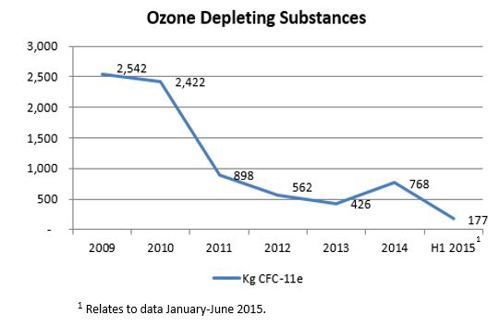As part of International Day for the Preservation of the Ozone layer, Jim Rushen, Group Head of Environment talks about this issue and our impact.
Minimising impact on the environment is something I care deeply about and here at Centrica, it’s an important part of my role and how we do business. So with today being International Day for the Preservation of the Ozone layer, I wanted to take this opportunity to talk to you about what we’re doing to limit our impact in this area.
A good place to start is perhaps at the beginning - what is the Ozone layer and why is it so important to us?
The Ozone layer is a belt of gas that sits above Earth and shields us from ultraviolet (UV) radiation from the sun. It’s important because without this protective layer, we’d be exposed to harmful UV rays which can cause diseases like skin cancer while endangering or even destroying some species of wildlife and plants.
That’s why there’s a concerted effort both at Centrica and internationally to reduce the deterioration of the Ozone layer caused by the leakage of Ozone Depleting Substances (ODS) into the atmosphere. The primary culprits are chlorofluorocarbons (CFCs) which used to be found in products like aerosols and refrigerators before they were banned while a number of other ODS are subject to a European Union (EU) phase-out programme. As a result of this collective action, I’m pleased to say that the Ozone layer is recovering at a rate faster than anticipated with full recovery expected by the middle of the century.
But to make this a reality, it’s vital that we all continue to take action on reducing the damage ODS can cause.
So what is our impact on the Ozone layer and what are we doing to mitigate it?
You might be surprised to know that as an energy company, our impact on the Ozone layer is relatively low. This is because the majority of energy’s emissions relate to carbon, with only a small volume of ODS used in our gas production processes.
We nevertheless work hard to ensure our operations both reduce usage and leaks of ODS through effective management systems and innovative new technologies. While levels of our 2014 ODS rose slightly as a result of maintenance work carried out, you’ll see from the graph below that we’re making solid progress achieving this.

Towards the end of the year we look forward to securing further ODS reductions through a two-year project totaling £84m at our Barrow-in-Furness gas terminals, which will also improve the quality of our gas and lower future processing costs. The 1.5km underground pipeline will eradicate the need for using Freon (an ODS) to cool and remove moisture from gas at the south terminal, by connecting it with ‘drying bead’ technology at the north terminal. This technology enables absorption of moisture in a similar way to silica gel found in product packaging.

Following the EU ban on purchasing new stocks of Freon, I’m pleased to say this project ensures Barrow will continue to supply energy to 1.5m homes in Britain into the next decade, and beyond.
When I look at progress made restoring the Ozone layer, I think about what more we could achieve through collective action. So while we will continue to take meaningful action to mitigate our impact on the environment, I hope you will too.
Find out more about how we’re reducing our environmental impact online.